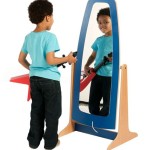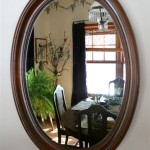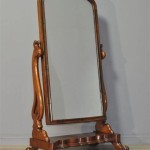Is There A Way To Mirror iPhone to Mac?
Mirroring an iPhone's display to a Mac offers significant benefits for various tasks, from presenting information during meetings to enjoying mobile games on a larger screen. Several methods enable screen mirroring, each with its advantages and limitations.
AirPlay to Mac: AirPlay, Apple's proprietary wireless streaming technology, is a primary method for mirroring iPhone content to a Mac. macOS Monterey and later natively support AirPlay receiver functionality, allowing Macs to act as AirPlay destinations. This feature eliminates the need for third-party software and provides a seamless user experience within the Apple ecosystem. To use AirPlay, ensure both the iPhone and Mac are connected to the same Wi-Fi network. The AirPlay icon appears in the Control Center on the iPhone, allowing users to select their Mac as the target display.
QuickTime Player: Mac users can also leverage the built-in QuickTime Player application for screen mirroring. Connecting the iPhone to the Mac via a USB cable and selecting the iPhone as a camera source within QuickTime Player enables screen mirroring. This wired approach offers a more stable connection compared to wireless methods, minimizing latency and potential connection drops. It's particularly beneficial for activities requiring precise timing, such as mobile gaming or demonstrating software functionalities.
Third-Party Applications: Several third-party applications provide screen mirroring functionality between iPhones and Macs. These applications often offer additional features beyond basic mirroring, such as screen recording, annotation tools, and enhanced performance optimizations. While some applications are free, others require a purchase or subscription. Evaluating the features and user reviews of these applications is crucial for selecting the most suitable option based on individual needs.
Reflector 3: One notable third-party application is Reflector 3. This wireless mirroring receiver runs on Mac, and allows users to mirror their iPhone (or other devices) without cables. Reflector 3 leverages AirPlay technology, allowing it to function seamlessly with Apple devices. It offers features like screen recording, device framing for a polished presentation, and the ability to connect multiple devices simultaneously.
LonelyScreen: LonelyScreen is another popular third-party option that transforms a Mac into an AirPlay receiver. It provides a user-friendly interface and supports mirroring from various devices, including iPhones, iPads, and Android devices. LonelyScreen offers features like recording mirrored content, customizing the background of the mirrored display, and adjusting the screen quality.
5KPlayer: 5KPlayer functions as both a media player and an AirPlay receiver. This makes it a versatile option for users who require both mirroring capabilities and media playback functionalities within a single application. 5KPlayer supports hardware acceleration, ensuring smooth performance during screen mirroring. It also allows for downloading online videos, expanding its utility beyond mirroring.
Factors Influencing Mirroring Performance: Several factors can influence the performance of iPhone-to-Mac mirroring. Network stability plays a crucial role in wireless mirroring methods. A strong and stable Wi-Fi connection is essential for minimizing latency and preventing disruptions. The processing power of both the iPhone and the Mac contributes to the overall performance and responsiveness of the mirrored display. Older devices with less processing power might experience some lag or reduced frame rates. The chosen mirroring method also influences performance; wired connections generally offer more stability and lower latency compared to wireless methods.
Choosing the Right Method: The optimal mirroring method depends on the specific requirements of the user. For casual screen sharing or presentations, AirPlay's wireless convenience is often sufficient. When low latency and stability are paramount, such as during gaming or detailed demonstrations, a wired connection via QuickTime Player or a third-party application with performance optimizations is recommended. Evaluating the features, cost, and performance characteristics of different methods helps users select the most appropriate solution for their needs.
Troubleshooting Connection Issues: Occasionally, users might encounter connection issues during screen mirroring. Ensuring both devices are on the same Wi-Fi network and have the necessary software updates installed often resolves common problems. Restarting both devices can also help resolve minor software glitches. If using a wired connection, checking the integrity of the USB cable and ensuring it is properly connected to both devices is crucial. Consulting the support documentation for specific applications or contacting Apple support can provide further assistance with troubleshooting complex connection problems.

How To Mirror Iphone Mac 2024

How To Mirror Iphone Mac With Usb Full Guide
How To Mirror Your Iphone Screen A Macbook

How To Mirror Iphone Screen Mac Quick Easy Wireless 2024

Mirror Iphone To Mac View Screen On 3 Ways

2024 Updated How To Mirror Iphone Mac With 5 Methods

How To Screen Mirror Iphone Mac Full Guide

Mirror Iphone To Mac In 5 Simple Steps Airbeamtv

2 Ways To Mirror Iphone Screen Mac Guiding Tech

Best Way To Mirror Iphone Mac








